- drach09's home page
- Posts
- 2022
- 2020
- June (1)
- 2019
- 2018
- 2017
- 2016
- 2015
- 2014
- December (13)
- November (2)
- October (5)
- September (2)
- August (8)
- July (9)
- June (7)
- May (5)
- April (4)
- March (4)
- February (1)
- January (2)
- 2013
- December (2)
- November (8)
- October (5)
- September (12)
- August (5)
- July (2)
- June (3)
- May (4)
- April (8)
- March (10)
- February (9)
- January (11)
- 2012
- 2011
- October (1)
- My blog
- Post new blog entry
- All blogs
2006 EEMC Neutral Pions: Transverse Single-spin Asymmetry (First Look)
Much work has been devoted to improving and building upon the 2006 EEMC π0 longitudinal analysis. However, there is also a transversely polarized dataset which to my knowledge no one has analyzed. It would be interesting to examine, among other things, AN, in this region of 1 < η < 2. STAR has analyzed transverse-spin jets at mid-rapdity (-1 < η < 1) and transverse-spin pions at forward rapidity (2.5 < η < 4). Examining pions in the EEMC would provide information in a region of phase space between regions where we observe no asymmetry (mid-rapidity) and rather large asymmetries (forward rapidity).
My expectation is that no sizable effects will arise. The asymmetries are known to grow quite steeply as xF increases. The vast majority of Run-6 EEMC data lie below the xF range of the published FPD data, which did not see sizable effects below xF ≈ 0.3. Thus, my expectation is that any effects in the EEMC will also be quite small. However, in my opinion, it is nonetheless worth the check. Here, I also post a link to a recent update to the VU-ANL group.
First Look
For this first look, I analyze 22 runs of 2006 ppTransverse data, prepared by Hal and Steve Gliske. I perform the same technique as used in my dissertation for FMS pions, 2-particle Sivers asymmetries, and recent analysis of 2011 jet Sivers. I bin yields in terms of spin-state, upper/lower-hemisphere, and as a function of the φ-angle. A cross-ratio is calculated in the standard way by combining yields from opposite sides of the detector with flipped spin-states. The asymmetry is extracted by fitting the cross-ratio vs. phi with a function of the form p0+p1×sin(φS). One expects the p0 to be consistent with zero within statistics. The asymmetry is, then, extracted via the p1 term. I calculate the asymmetry as a function of both pT and xF. The pT binning is the same as that of the ALL results. For this small sample, I have almost no data from 0 < xF < 0.05 and 0.5 < xF < 1. Thus, I show the xF-asymmetries for three bins; and I hope to increase this as I integrate more statistics. These asymmetries have not been corrected for polarization. That will manifest as a scale of the vertical axis and error bars. These asymmetries are also not corrected for backgrounds. There may be azimuthal dependence to the background subtraction, so this will likely involve a restructuring of the code to accommodate the background subtraction prior to calculation of the cross-ratios.
Figure 1: Assorted Pion Distributions
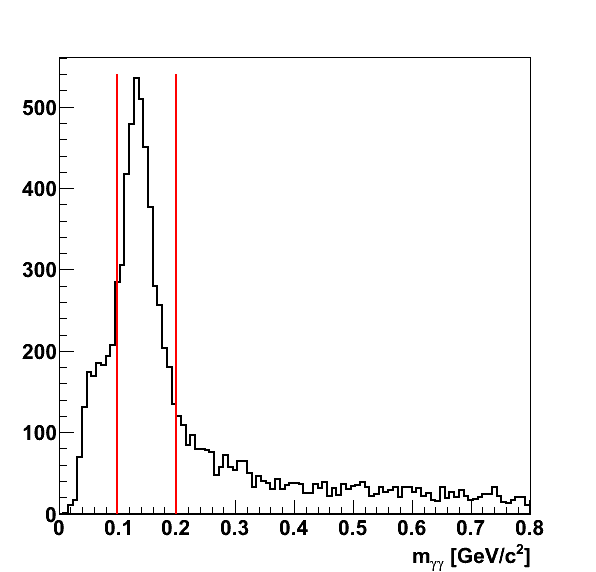
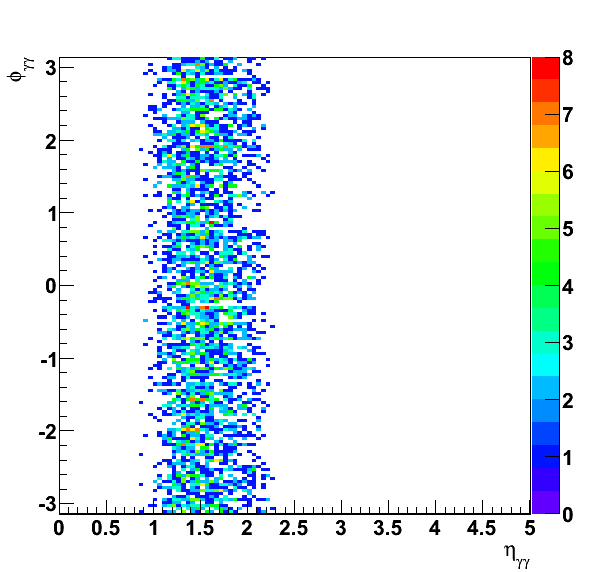
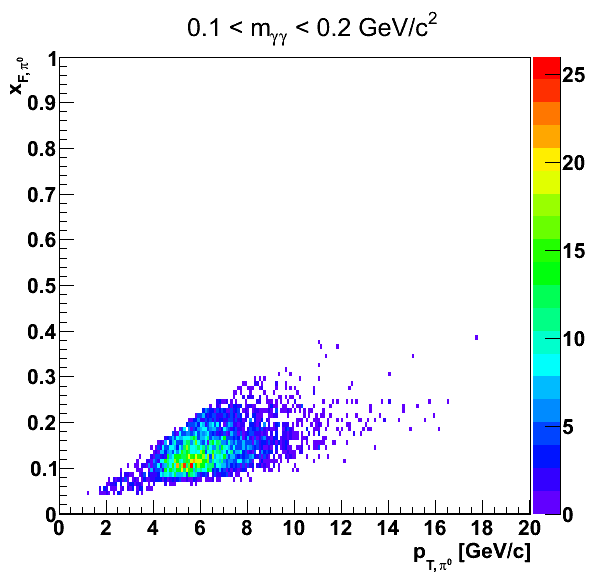
Figure 2: xF > 0
| pT | xF |
|---|---|
.png) |
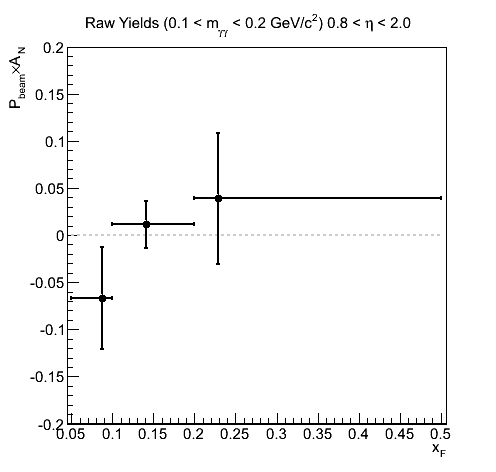 |
.png) |
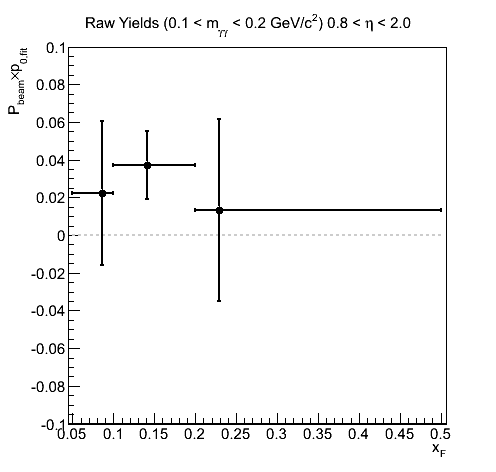 |
The top row shows the extracted asymmetry while the bottom row shows the constant of the fit. I would expect the constant to fluctuate around zero, however, it does seem to be systematically above the horizontal. I'm not entirely sure why this is, but I wouldn't draw too many conclusions until we integrate more statistics. As expected, the asymmetries are consistent with zero. As seen in Fig. 2, asymmetries for xF < 0 are also consistent with zero.
Figure 3: xF < 0
| pT | xF |
|---|---|
 |
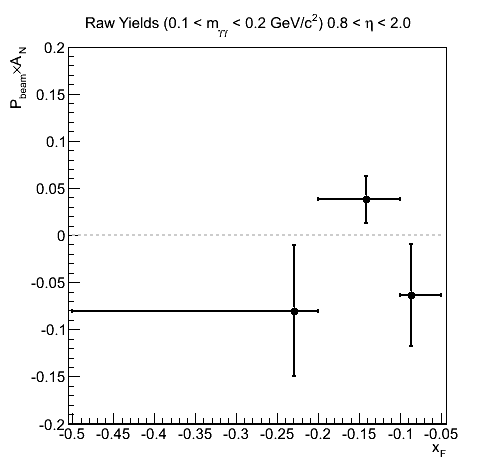 |
.png) |
 |
Below, I show the fits for individual bins (xF < 0). I show not only the physics asymmetry but also the instrumental asymmetries and luminosity asymmetries. Sizable non-physical asymmetries show up as an expansion of the statistical errors in the physics asymmetry.
Figure 4: Fit Results for pT Bins
| 0 < pT < 4 GeV/c |
|---|
 |
| 4 < pT < 5 GeV/c |
 |
| 5 < pT < 6 GeV/c |
 |
| 6 < pT < 7 GeV/c |
 |
| 7 < pT < 8 GeV/c |
 |
| 8 < pT < 9 GeV/c |
 |
| 9 < pT < 10 GeV/c |
 |
| 10 < pT < 12 GeV/c |
 |
| 12 < pT < 16 GeV/c |
 |
Within statistical uncertainties I see no sizable instrumental or luminosity asymmetries in the pT bins. There may well be a non-zero luminosity asymmetry, though, I anticipate it will be quite small.
Figure 5: Fit Results for xF Bins
| 0.05 < xF < 0.1 |
|---|
 |
| 0.1 < xF < 0.2 |
 |
| 0.2 < xF < 0.5 |
 |
As with the pT bins, I see no sizable instrumental or luminosity asymmetry in the xF bins.
- drach09's blog
- Login or register to post comments
